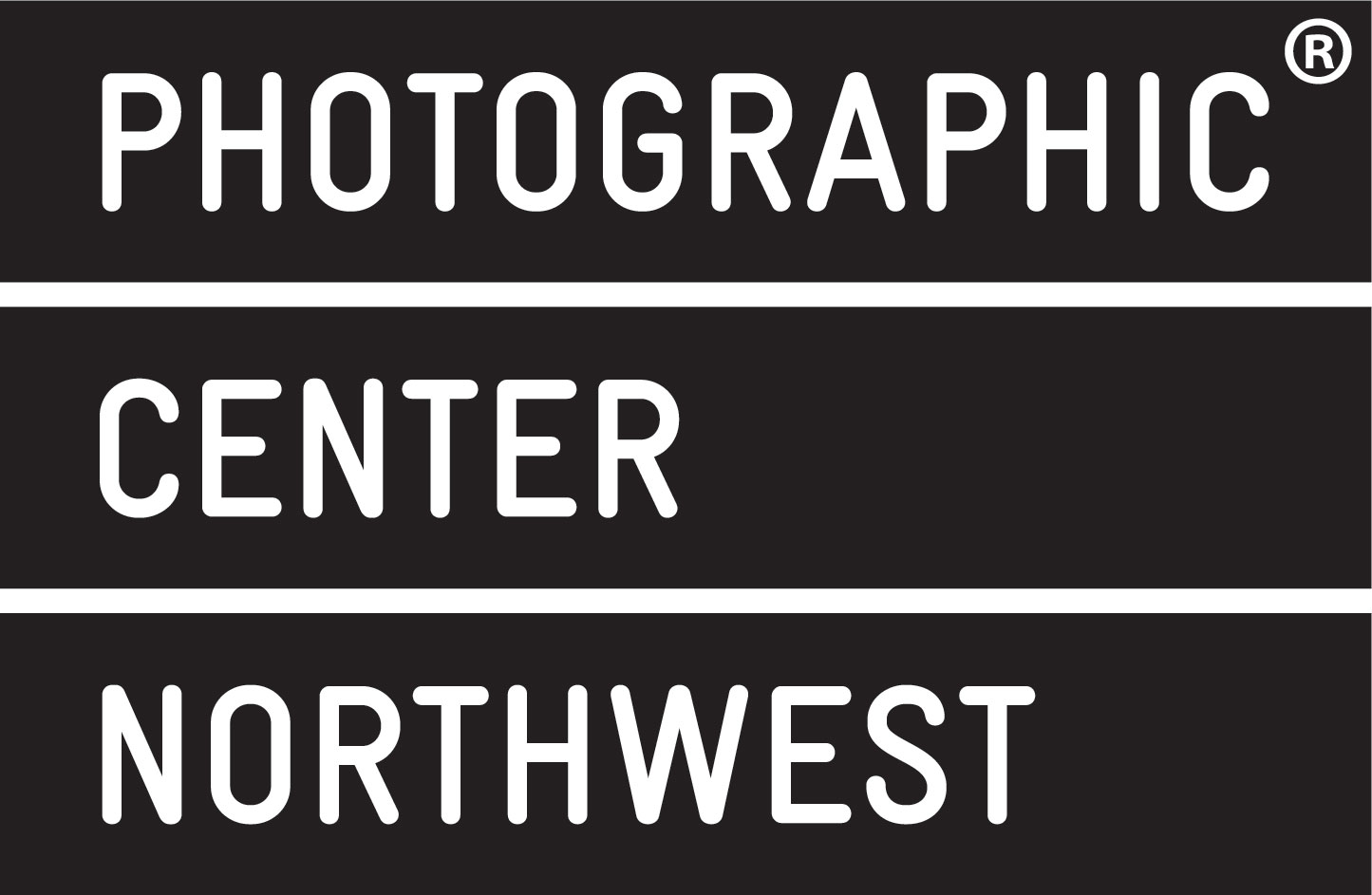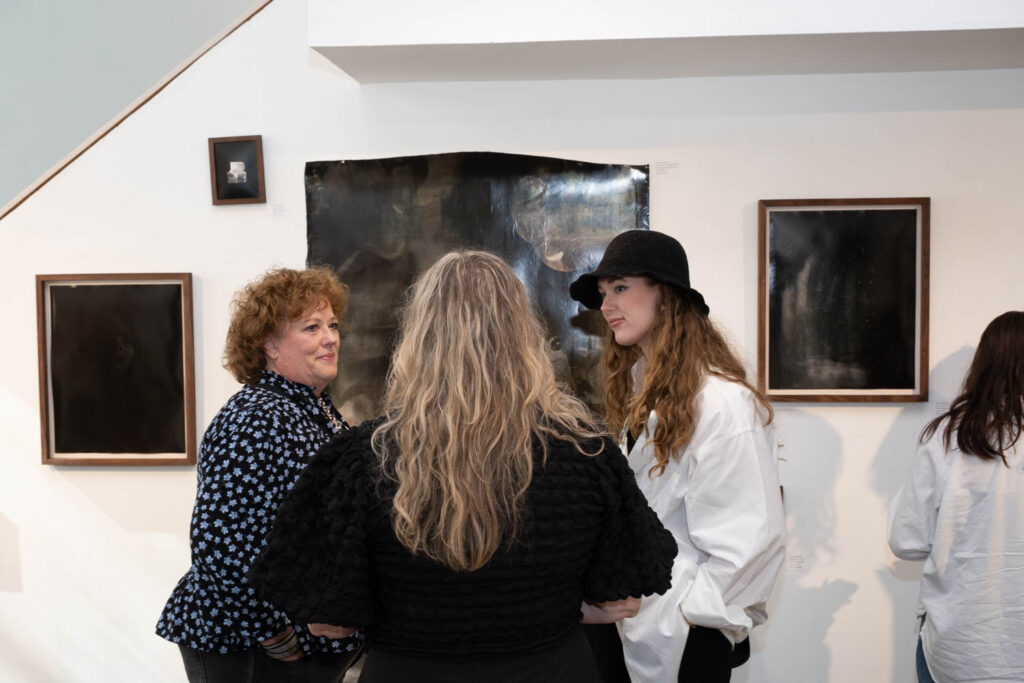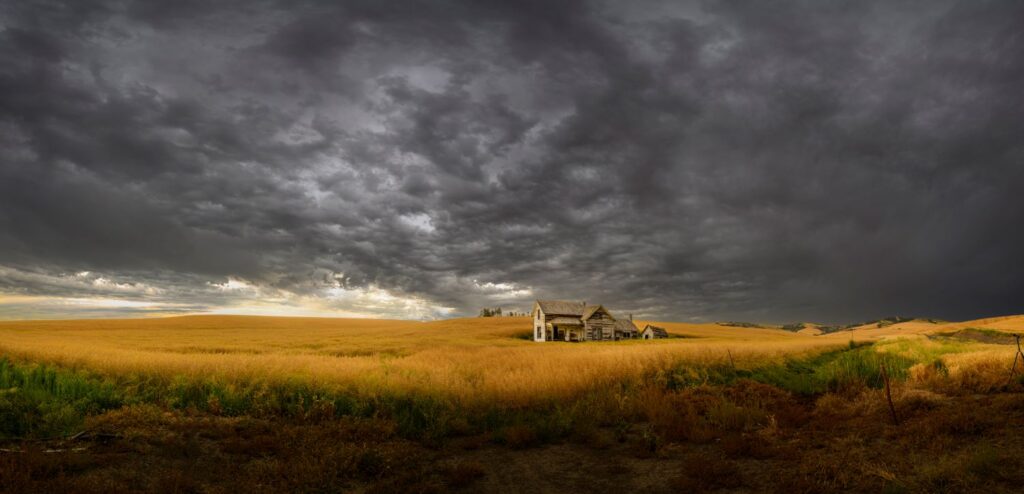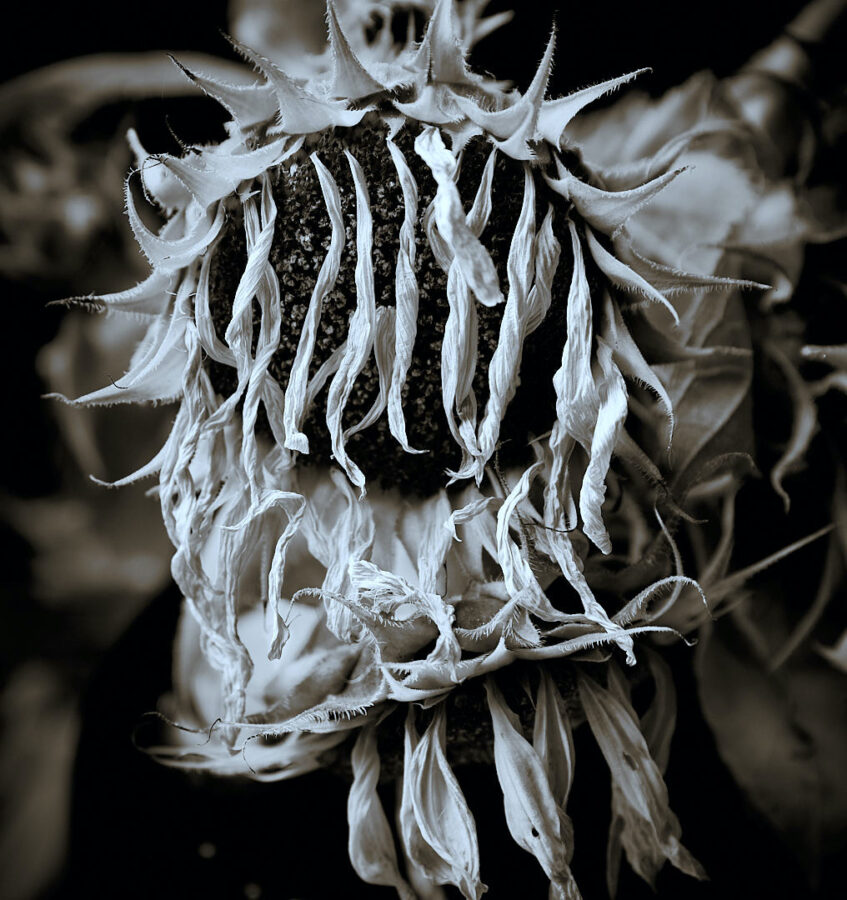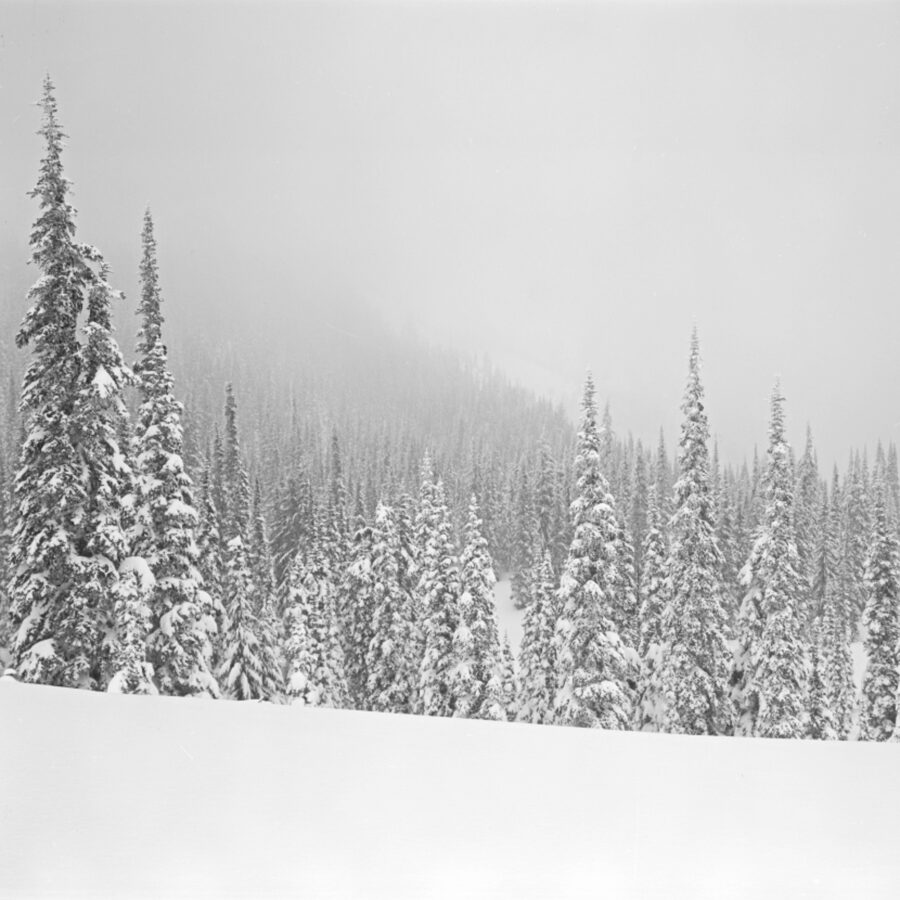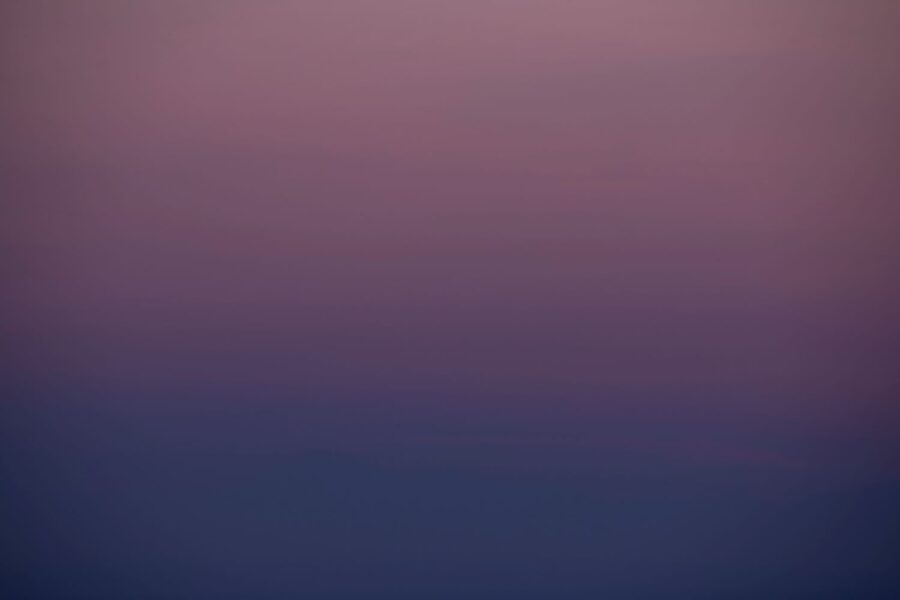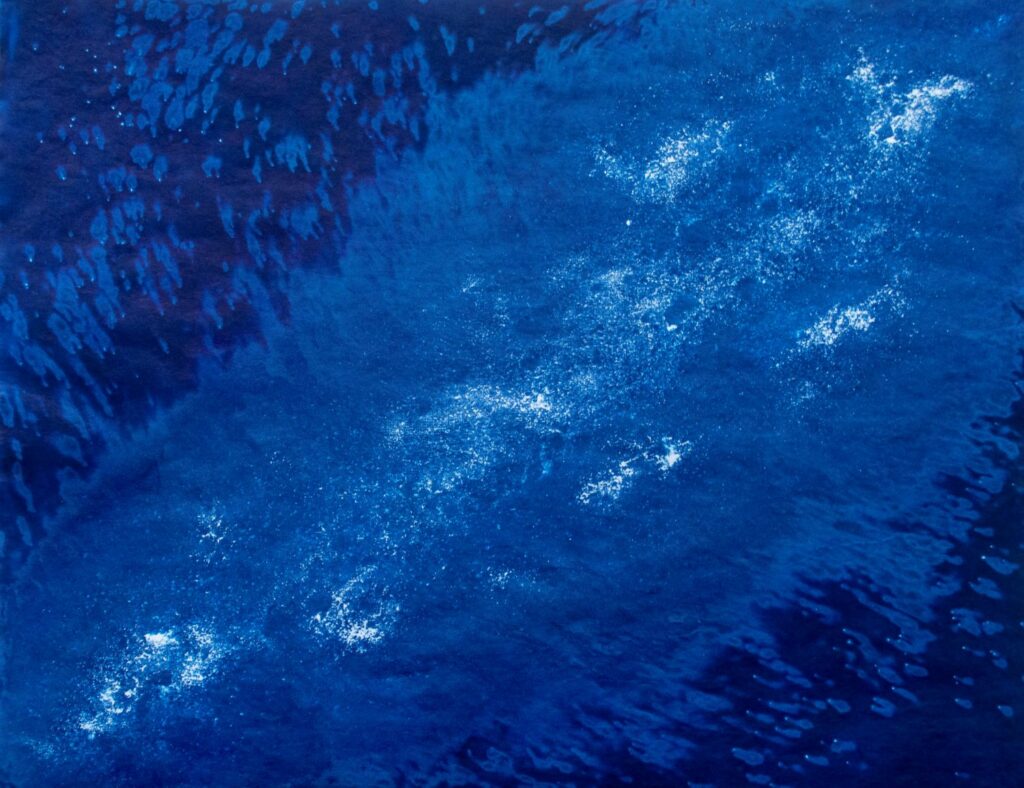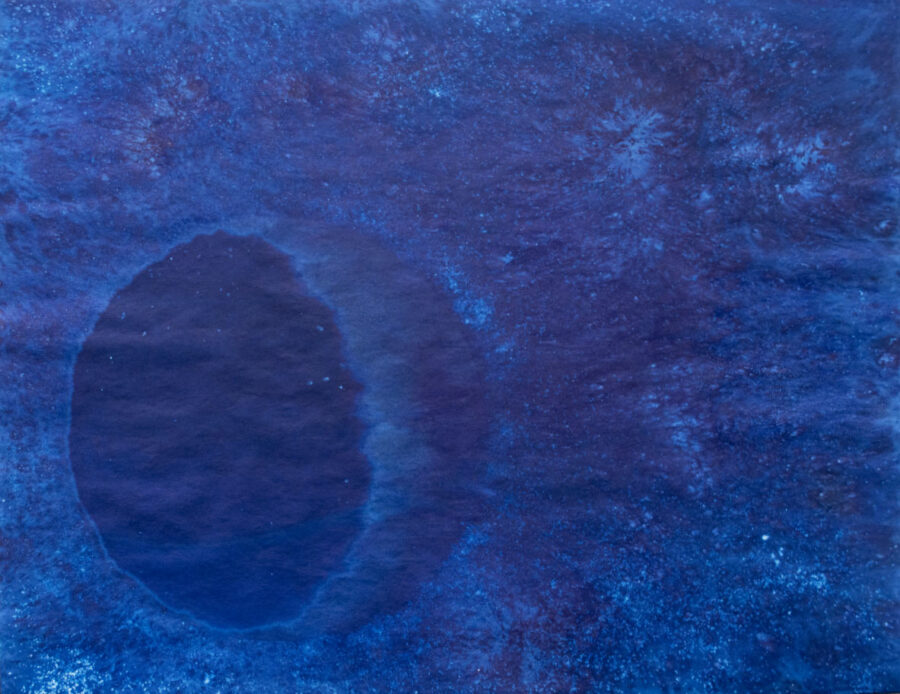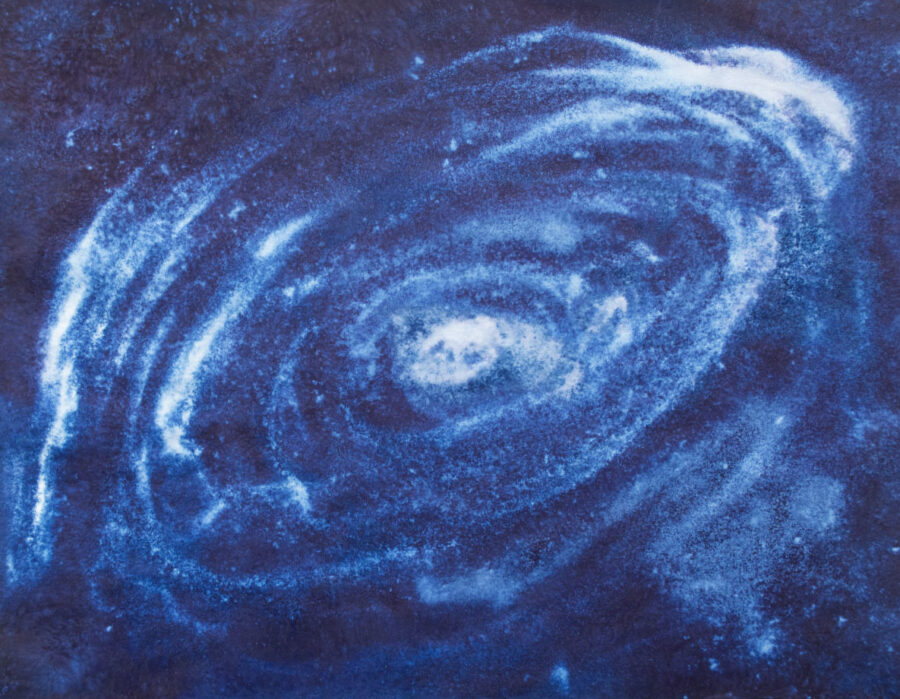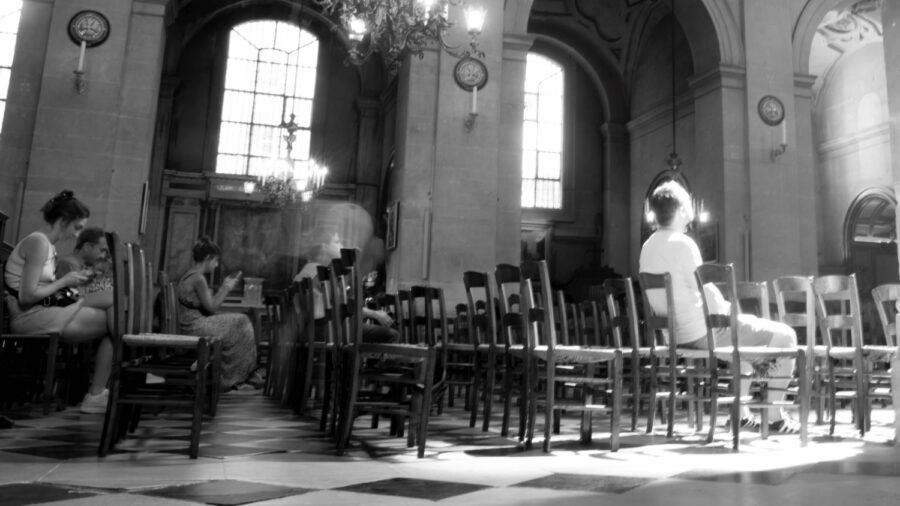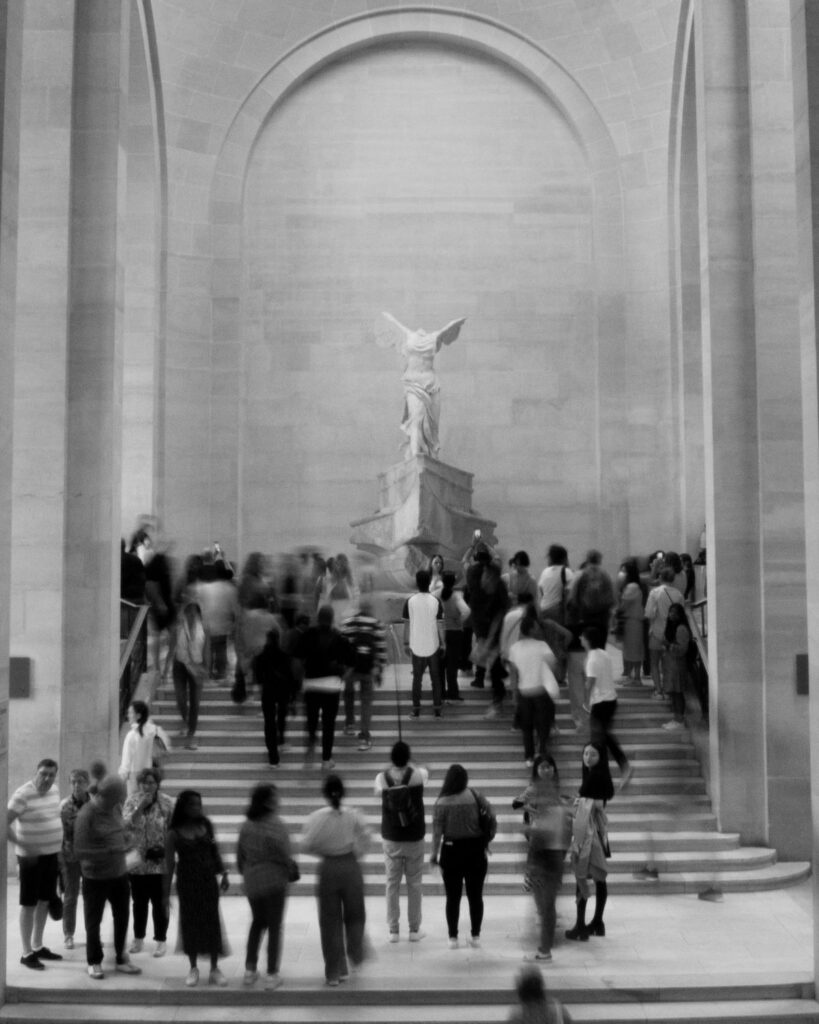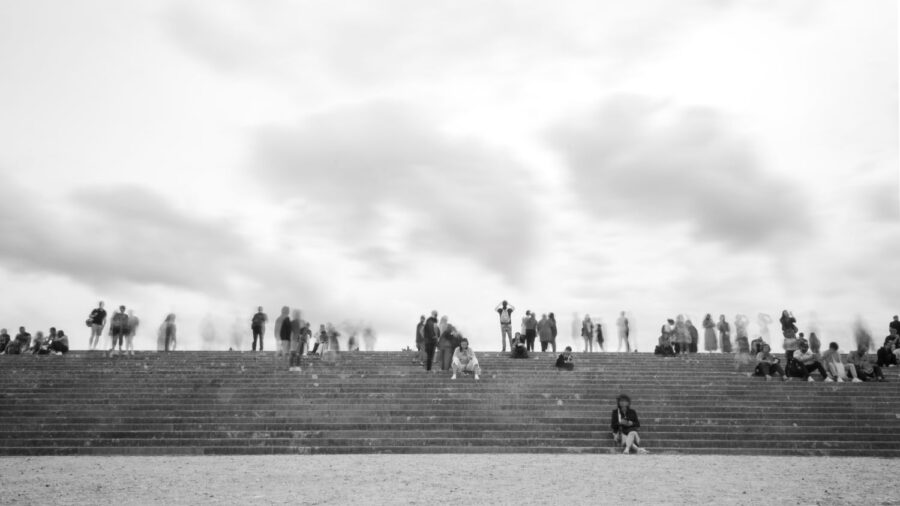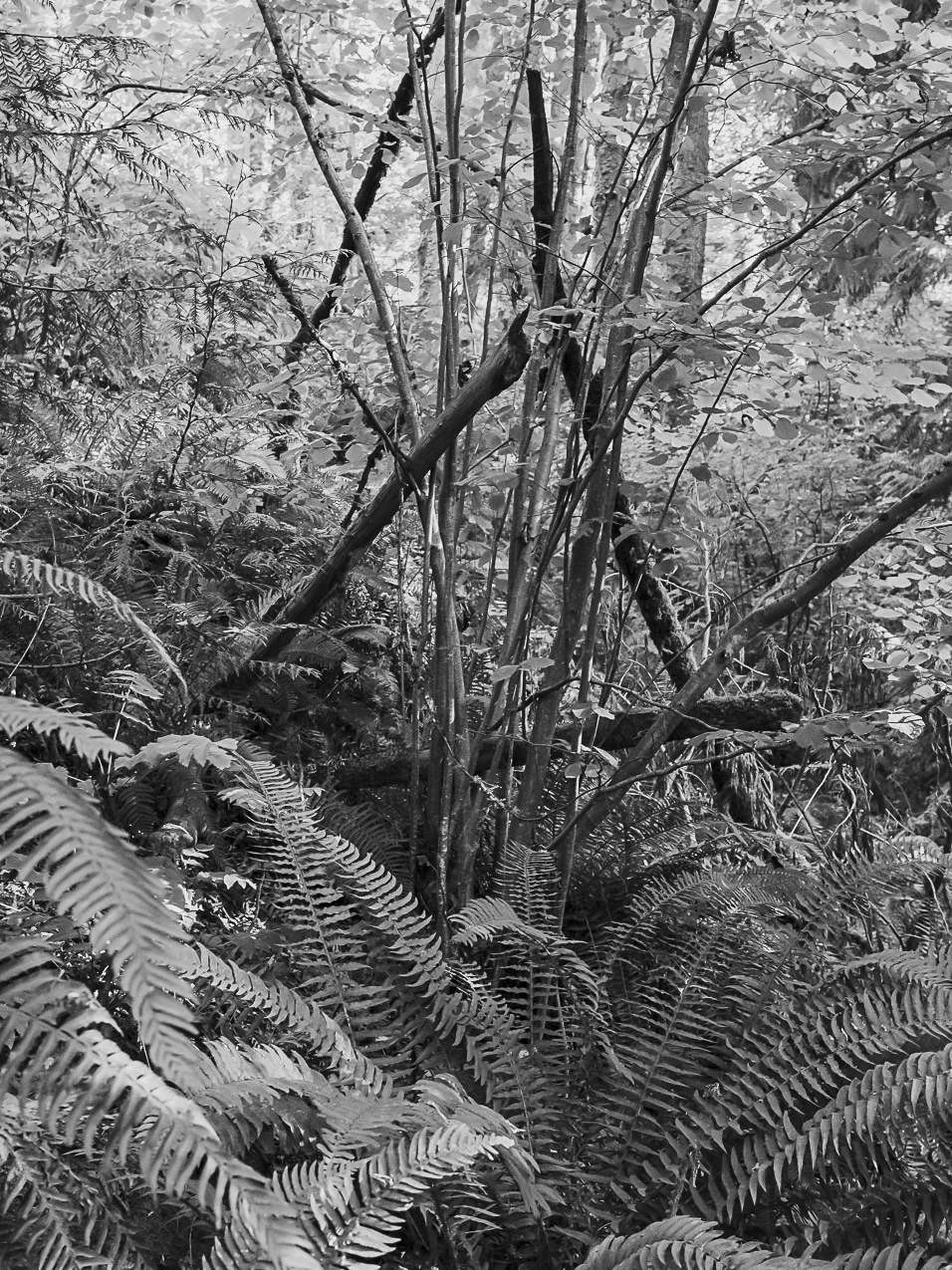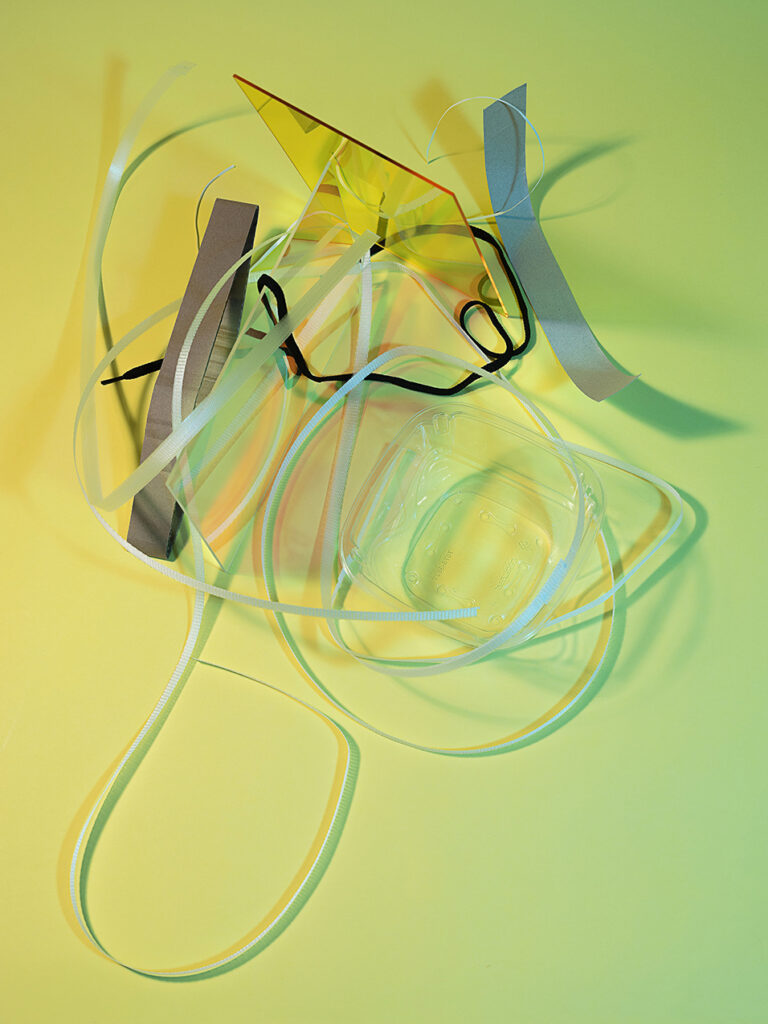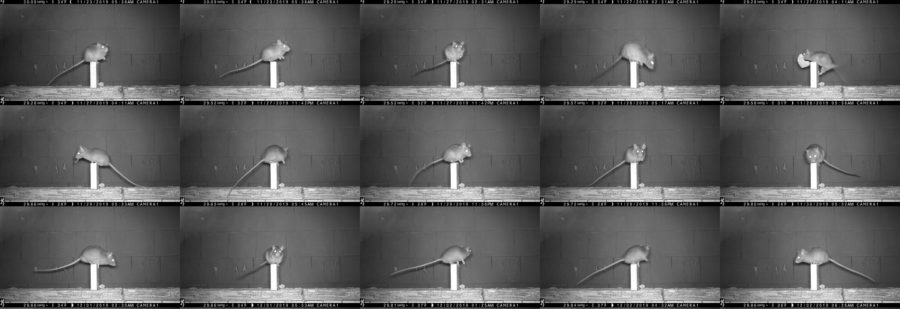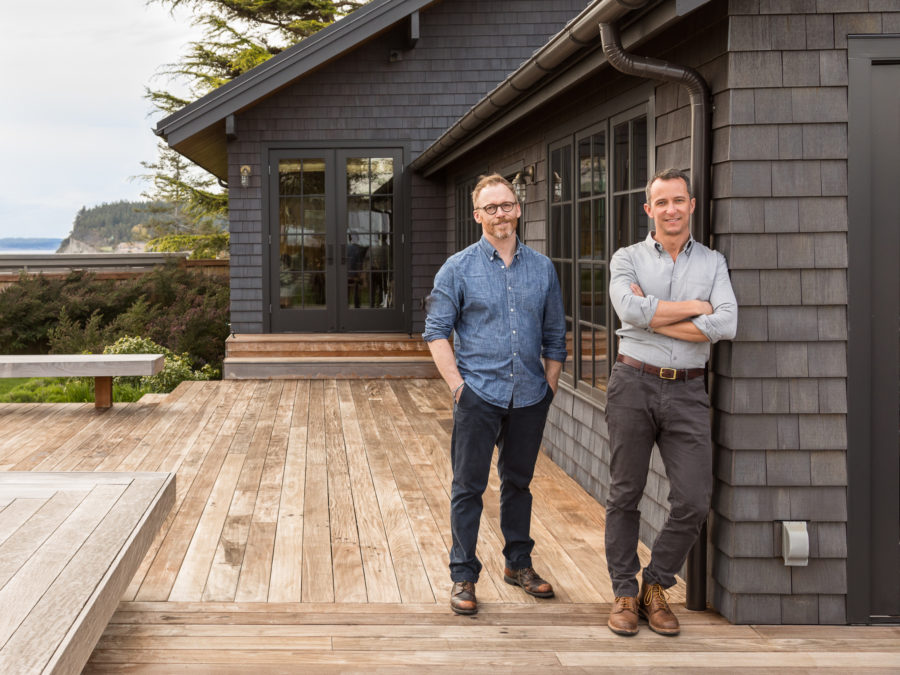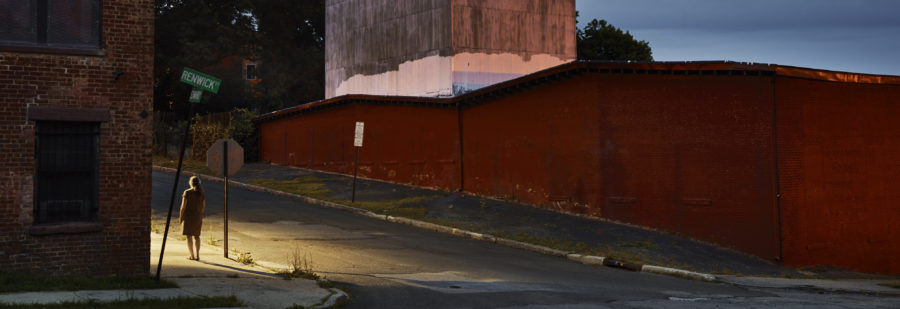Image Credit: Lilly Everett, from the 2023 Thesis Exhibtion Reception
Alumni Association Update
What is the Alumni Association and who is a member? The PCNW Alumni Association includes and is for all graduates of the Certificate in Fine Art Photography. We have a volunteer leadership committee that seeks to deepen the connection between Alumni, current Certificate Students, and PCNW, and explore ways in which we can further support, elevate, and celebrate one another.
Are you a graduate who is interested in getting more involved? We intend to renew the committee on a regular basis, with new members, and think this group can lead some great initiatives. Reach out to us at alumni@pcnw.org if you’re interested in joining the leadership committee, have ideas to help foster connection and professional development, or if you’d like to support upcoming initiatives.
Are you an alum with an upcoming exhibition, book launch, lecture, portfolio review, or other event that you’d like us to feature in a future Alumni Newsletter and/or on the PCNW Alumni page? Tell us about what you’re up to by completing the Alumni Survey Form or e-mail us at alumni@pcnw.org.
Posting on Instagram? Add another hashtag to your work: #pcnwalumni
Thank you to our current volunteer leadership committee members: Lisa Ahlberg, Gwen Emminger, Jenny Hansen Das, Andy Holton, Janet Politte, Matt Ragen, Anna Ream, and Al Varady.
Additional thanks to the alumni who contributed to making this issue of the newsletter happen, especially: Lisa Ahlberg, Jennifer Brendicke, Joan Dinkelspiel, Jenny Hansen Das, and Gwen Emminger.
Alumni Highlights
Image Credit: Daniel Gregory, Storm Front
Daniel Gregory
graduated 2009
interview by Joan Dinkelspiel, grad. 2017
Intro
I often get asked if I worry about so many images being made that we are starting to get redundant and cliche in photography. As long as we are willing to take the risk of sharing who and what we are with others, photography will continue to be as amazing as the people who create it.
What is it about photography that sustains your interest? Other mediums that you use for sharing your creativity?
I have always been interested in photography. I remember receiving a Kodak 110 camera with vertical flash bars as a Christmas gift when I was a child. The first major purchase I made with my own money, earned from mowing lawns, was a Pentax ME Super, which I still own and occasionally shoot with.
I have two learning disabilities, mild dyslexia and severe dysgraphia, which affect and manifest in my writing. Fortunately, they were discovered early on in my education, but they still affect me to this day. I often joke that I turned to photography because writing was such a challenge.
To some extent, that is true. Photography has always given me a means of expressing myself in a way that I couldn’t otherwise. When teaching, I often discuss the verbal and visual languages available to us in the visual arts. That visual language has given me an opportunity to be more expressive than I might have otherwise been.
I love learning, which is one of my favorite aspects of photography. While I enjoy learning new things about both analog and digital darkrooms and techniques, learning about myself and others when taking or looking at photos is the real gift. Seeing and interacting with the world in a way that I might not have otherwise always teaches me new things about myself. When you add in the opportunity to learn about people, cultures, places, ideas, issues, beauty, light, and so much more from the images that others are creating, why wouldn’t you do photography?
People often ask me if I worry about so many photos being taken that we are becoming redundant and clichéd in photography. I think that is a risk if people are not willing to put themselves into their work. However, as long as we are willing to take the risk of sharing who and what we are with others, photography will continue to be as amazing as the people who create it.
I have been hosting a podcast called “The Perceptive Photographer” for over eight years now, without ever missing a Monday episode. It is a personal journey about the things and ideas I think about related to my photography, photography in general, and the creative process. It has become one of my favorite artistic outlets. The episodes are always brief, roughly 10 to 15 minutes in length, unless I am interviewing someone. The podcast is like having a journal in audio form.
My partner, Lori Kane, is an herbalist who runs Ritual Mischief (www.ritualmischief.com). She grows or collects most of the plants used in her products here on Whidbey Island where we live. I enjoy spending time with her and being in nature with the plants and trees. I am the only one who does not have to weed the yard, as Lori needs those weeds. I also love walking in nature and find it to be one of my creative spaces and places. From stacking rocks on a beach to talking to mushrooms in the forest, there is always something doing creative things in nature.
Image Credit: Daniel Gregory, Melancholy
Where do you show your work?
I have current work at the SAM Gallery in Seattle. I also keep some of my images always on
display in my studio for visitors, or during one of the many studio tours in Whidbey Island. Recently, I participated in a group landscape show in New York, and my piece ‘Movements in Green’ from my color and music series received an honorable mention.
I often rotate the artwork on my website to showcase old, new, and emerging images. I am not a big fan of social media, so you won’t find me there often. Occasionally, I post on social media for a few weeks, but it’s not my preferred platform.
What’s relevant about your life prior to photography that contributes to your photographic work now and that might be of interest to aspiring photographic artists?
I mentioned my disabilities earlier, and they have been a significant factor in my photographic work, as it offers me an outlet.
Before becoming a full-time photographer and photo educator, I had a career in tech and marketing at several places. The experiences and skills that I developed there or ideas or concepts in that work often show up in my work today. I believe that our creative practices are from the touchstones of the past/preset/future for us to build on, learn from, or leap towards.
If I had to pick one or two things from my life before photography that I really hold on to, it would be that being a photographer is more than just taking photographs. It is about living a life in photography with passion for all of it. If you are in, go all the way in. Look at images, spend time with them, spend time in your community, and when you show up to be part of photography, then photography will show up for you. The other thing is that inspiration is boundless and comes from anywhere, with no sense of time. So things that you did ten years ago might be the seed that is showing up in your work today.
What were some of the highlights of your PCNW Thesis / Certificate Program experience?
I had a cohort of people with whom I connected really well, which was an incredible experience. Spending a year with the same group of people, growing and developing together, was a once-in-a-lifetime opportunity. I loved the process of learning and receiving feedback regularly, and seeing how work shifts, develops, and changes over time. It was amazing to learn how others work and see how they develop. Having Claire (Garoutte) as a faculty member was also great because she always had the right advice to offer at the right time. For me, this was also my first group show, and it was so exciting to see a completed body of work up there and to be able to share it with others.
Based on the wonderful experience I had during my thesis, I now teach an 8-month online workshop called the Meaningful Image with a small cohort each year. The workshop is designed to provide a long-term level of engagement with a group of people in hopes that it can help others experience the joy I did with my cohort.
Image Credit: Daniel Gregory, Olympic Winter
How did the PCNW thesis program prepare you for your many years of teaching? What
and where are you teaching? What do you enjoy about teaching?
The thesis program really had an influence on how I approach my teaching at PCNW. I had the opportunity to participate in the thesis program where I was exposed to various approaches and techniques for sharing knowledge about photography. I had previously worked as a professor after completing my MA degree, and I enjoyed teaching. When I was given the chance to work as a teaching assistant (TA) for black and white classes and later to teach at PCNW, I immediately jumped at the opportunity. I started working as a TA around 2008 or 2009 and began teaching in 2010 or 2011. I served on the board for a few years as well.
Over the years, I taught a few classes at PCNW such as Black and White 1, 2, Intro to Zone, Continuing Zone and Advanced Printing. Upstairs in the digital space I have taught Lightroom, Contemporary Color, Photoshop, Fine-Art Printing, various project classes, creativity classes, black and white digital, alt-processing, etc. Currently, I mostly teach advanced black and white analog and some digital classes.
Apart from teaching at PCNW, I have also taught at several other places, including Photoshop and Lightroom Virtual Summits, KelbyOne, CreativeLive, and at numerous national and regional conferences.
In my classes, I hope to inspire my students, help them acquire new skills, and provide them with the language to get closer to their photographic goals. At the beginning of each class, I think about how that day’s class can unlock doors and ideas for all of us in the class.
I enjoy teaching because I love to learn. Every time I teach a class, I learn something new. Watching people learn, observing their responses, examining their work, and seeing how they perceive the world and showcase it in their images can be quite addictive.
Image Credit: Daniel Gregory, Aspen Grove
Do you collaborate with Gina White?
Gina and I have known each other for a long time and have worked together countless times. We often collaborate on classes, content, and ideas, even when we haven’t developed them together. Our most recent collaboration was developing the Methods of Alternative Processing track at PCNW, making it accessible to everyone who wants to start working in the wonderful world of alternative processing.
Gina and I have some other ideas for projects to work on together in the near future, as time allows. They should be pretty fun and cool, so stay tuned.
What advice would you give photographers and art teachers?
The advice I give to everyone as a photographer is also what I believe to be the most difficult thing to do in photography. Meaningful work comes from within us, from how we connect with the world and the people around us. For work to truly be meaningful, we must be willing to take risks and share with the world what is special about us and our relationships. This risk involves opening ourselves up to the possibility of pain, angst and the joy that may come from how others respond to it. Photography has a great gift for us in that it makes us care and feel about things, people and places we never knew.
My advice to anyone who wants to teach is to remember that teaching is a collaboration, and it’s not about you. In my experience, when my teaching hasn’t gone well, it’s because I allowed my ego to take center stage. However, when it does go well, it’s because the people I’m collaborating with are at the forefront of the experience.
Image Credit: Daniel Gregory, Purple Rapture
Current and future plans?
I am currently working on a number of new photo projects including one that I have been having lots of fun with that I currently call The One-Hour Portfolio. For this body of work, 8-12 images of a place, person, subject are created in one hour. The resulting work is a grid of images that act as individual works of art and as a complete single piece.
After scanning some film work, I am returning to finish work done in the Olympic and Cascade mountains that I started prior to my thesis.
I also am getting ready to start a project that has been on my mind for a while now called Creative Spaces — about people and space. I hope to incorporate photography, video, text, and audio.
This year I am hosting a number of workshops, both online and out of my studio up on Whidbey Island, details of which are on my website (see link below). Some of these workshops include digital printing, platinum printing, critique, Lightroom, black and white, my Meaningful Image Core Course and Advanced Course, travel workshops to the Palouse region and Oregon Coast, as well as free webinars every month or so.
I have also been doing some product shooting and editorial work which is new to me, and I have enjoyed learning those skills and having the chance to work with publications on their visual story telling.
For more about Daniel J. Gregory:
www.danieljgregory.com
Instagram @dangregphoto
Image Credit: Gina White, Milky Way Wave
Gina White
graduated 2008
interview by Joan Dinkelspiel, grad. 2017
Intro
I have been practicing photography for over 30 years and teaching for 20+ years. I work in a variety of processes, including traditional silver printing, lith printing, cyanotype, kallitype, platinum, and photopolymer gravure. Almost all of the alt process work is made using digital negatives. My two current projects are working with wet cyanotype and working in the digital world to make long exposures and making larger prints than I could logistically make in the analog darkroom.
What drew you to photography?
It used to be that when I picked up the camera, the outside world would fall away. I found a sense of peace through the lens. The act and purpose of going out to photograph was to spend some time in that peaceful space. No pressure. I let the work lead me to the project. It is harder these days to make time to go out to shoot, to clear my head and just be in space. I also have a bad habit of putting a lot of pressure on myself. Like, if I am going to take the time to go out and shoot, I need to make good use of it and make serious work. Funny, I now call it work, no wonder I have trouble getting into that space. In the old days, I would just go out to photograph for the joy of it. On the upside – once I get started making work, it does not take long for me to remember how to breathe and be in the moment. And the work is purposeful. It helps that both the projects I am working on have inspired and continue to inspire me deeply. It is very satisfying.
What has sustained your interest in photography?
The magic of photography and passing on the passion that was passed to me. I understand how most of it works but that makes it no less magical to me. Watching a print come up in the developer is no less magical to me today than it was on that first day in the darkroom where I made my first print. PCNW at that time was in the garage of an apartment building out in Green Lake. That is where I took my first classes from Peggy Washburn and Claire Garoutte. They opened a world to me that changed my life and me forever. I remember vividly sitting in the back of my first class with Claire and thinking, “I want to be her someday.” These days when I see her, I tell her that and she says, “No, I want to be you.” Now almost 30 years later, I have moments when I see the proverbial light come on in a student’s face. Then to be able to watch as they make it their own, I think, “Look at that. You did it.”
Image Credit: Gina White, Event Horizon
What other mediums do you use for your creative expression?
I am one of those people who is endlessly drawn to dabble in a wide variety of art forms. I like to learn and play with all sorts of mediums, crafts, and skill sets. I recently returned to drawing on a regular basis, to dabble with watercolor, ink work, and something called neurographic art. I have been using these during tiny artist dates with myself to give my workday brain a little creative retreat. I have also taken classes in copper plate etching and monotype printing at Pratt with Ricky Wolfe. I enjoyed both immensely. I think exploring other mediums, especially in the visual realm, can help us look at photography anew.
I also have two crafts that I create with and sell. I have been making handmade soap for many years which I now make as a side gig for Ritual Mischief on Whidbey Island. Lori Kane, the owner (and incidentally Daniel Gregory’s wife), is an herbalist. She infuses olive oil with nourishing herbs, and I make soap out of it. I am also a weaver, a craft I picked up when I discovered I could no longer crochet. My hands just would not work that way anymore. So, one snowy week I just took the leap and bought a rigid heddle loom. With the help of YouTube U and a lovely woman named Kelly Casanova, I taught myself to weave. At the moment, my favorite thing to weave is cotton hand towels and wash clothes. It is amazing how changing one thread can completely change the design.
Do you collaborate with Daniel Gregory?
Oh, Daniel and I are always collaborating on something. Sometimes it’s a video, sometimes it’s a workshop, sometimes it’s figuring out how to make a photopolymer gravure without an etching press (it involves a truck, ha, ha). For many years we worked together to develop what we now know as the Methods in Alt Process series of classes at PCNW — a group of classes that starts with teaching students to calibrate curves (think zone tests for digital or learning to create a digital profile for a specific process and set of variables). First, we do this on silver RC paper for its consistency. Then we move into learning to do this for alt processes such as cyanotype, VanDyke, and kallitype. The third class in the series is a project class where students take their new skills and apply and adapt them to their own work. Learning these skills opens doors you can’t imagine.
What advice would you give photographers and art teachers?
Permission to fail. This is a huge lesson in my opinion in photography, in art in general, and in life. Teaching as a passion is giving of your soul. Don’t forget to make time to create to feed your soul. Your longevity as a teacher often depends on it.
annual Chase the Light event.
www.ginawhitephoto.com
Instagram @gwhitecreativebee (for travel, soap, weaving, creative exercise) and @ginawhitephoto (for photo work)
Support Gina’s projects at Ko-fi.com/ginawhite
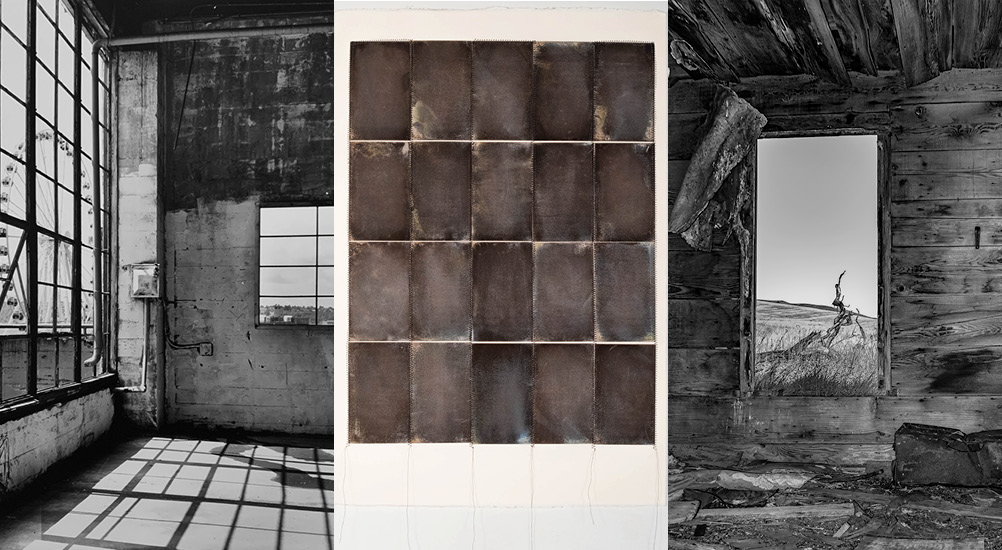
Image Credits (L to R): Leila Kirske, Jenny Hansen Das, and Chad Lund, 2023 Graduates
Alumni Critique Groups
Are you a graduate or current student of PCNW’s Certificate in Fine Art Photography? You’re invited to join us at one of our Alumni Critique Groups!
The PCNW Alumni Critique Groups can be invaluable in strengthening connections with colleagues, supporting continued photographic efforts and sharing experiences. Feel free to join in at any time (to either group) and bring new work to share!
SEWARD PARK
Please join us for a photo critique group/happy hour on Wednesday, February 7th. Bring work to share, or just come to talk photography with other PCNW Certificate Program alums and current certificate students. We will be meeting the first Wednesday of every month, starting in February. Each month we will have a suggested topic of conversation and we will look at work. If you’d like, feel free to bring any photo project you would like to share. Sharing is not a requirement – all are welcome!
First / Next Meeting: Wednesday, February 7th @ 4-6pm
Where: Chuck’s Hop Shop Seward Park | 5041 Wilson Ave S., Seattle, WA
Discussion Topic: What’s current in photography?
More Info: Jenny Hansen Das at jenny@jennyhansendas.com
WEST SEATTLE
The West Seattle daytime group has been meeting for several years now. We meet every second Wednesday of the month. We welcome all PCNW Certificate Program alums and current certificate students. We show some work and often have a prompt for a discussion as well.
Next Meeting: Wednesday, February 14th @ 11am-1pm (Meets every second Wednesday of the month)
Where: West Seattle Uptown Espresso | 4301 SW Edmunds St. Seattle, WA
More Info: Al Varady at alvarady@gmail.com
Alumni Updates / News / Exhibitions
Image Credits (L to R): Cian Hayes and Al Varady
EXHIBITION HIGHLIGHT — CIAN HAYES & AL VARADY
by Lisa Ahlberg, grad. 2005
Alumni Cian Hayes and Al Varady (both 2017 graduates) opened Solas Gallery in Seattle this past May 2023 with their inaugural group show and have several exhibits under their belt. Now they are poised to show their own work in the upcoming exhibit entitled Redeconstructions / An Tobar.
The exhibition takes place from January 27 thru March 9, 2024, with an opening reception Saturday, January 27th from 2-5pm.
A press release from the gallery states, “Al Varady’s Redeconstructions are photos of assemblages and quasi-collages in an emerging language of inferences, relationships, references, serendipitous occurrences, and scale.”
“In An Tobar (‘The Well’), Cian Hayes explores reservoirs of nature within Seattle and uses them as a focus to reflect on Irish traditions, the contemporary Irish immigrant experience, and his own mental health.”
I had a couple questions for them regarding the showing of their work:
It’s been nine months since you’ve opened Solas Gallery and now the two of you are exhibiting your work. Why is that important to you?
Cian: I think there’s value in having us show our own work so we see what we put others through. I’m hoping that we’ll experience some of the responsibilities and the benefits that the artists we’ve shown have experienced, and that it’ll inform how we work with artists in the future. The other day Al mentioned that he thinks it’s valuable for us to emphasize that the gallery is run by artists and I think he’s right, I think it’s probably important for us to show our own work as a way to emphasize that we aren’t gallerists in it for the money, but actually practitioners in our own right doing it to create a space for photography.
How has the experience of helping others to show their work, affected how you are approaching presenting your work?
Cian: I think showing other people’s work has taken some of the intimidation out of showing my own. For a start, framing and hanging the work feels like no big deal, and then when it comes to talking about the work and promoting it I’m more comfortable doing that. I feel presenting and talking about someone else’s work is a great responsibility and I’ve done it a few times now, so I’m feeling more comfortable with doing it for myself, though also more frustrated with myself for not being more buttoned up in how I describe my work.
You can view their work on the Solas Gallery website but be sure to see the exhibit in person!
Image Credit: Selena Kearney, eBay, $31.07, 2019
BOOK, FEATURE & EXHIBITION HIGHLIGHT — SELENA KEARNEY
Selena Kearney’s (2019 graduate) exhibition Object / Ritual at Solas Gallery in Seattle just ended, but she got a great write-up in the Seattle Times (read here)!
She was featured in Art Zone with Nancy Guppy, watch the video here.
And her new book, Every Object has a Ritual published by Minor Matters is now available here.
SALON EVENT RECAP
by Gwen Emminger, (grad. 2022)
Our second alum-hosted Salon Event (a fun opportunity for current students, alumni and faculty to connect and share work) took place on December 2, 2023 in combination with the PCNW Holiday Open House.
It was a delightful afternoon with good conversation and interesting photography brought by those that attended. My favorite part of the day was meeting a few students that are just getting started in the Certificate Program. It feels good to be connecting them to the larger community early on. I look forward to staying in touch as they grow in the program.
We are setting our sights for the next Salon Event to be hosted at the end of Winter Quarter 2025. Hope to see you there!
